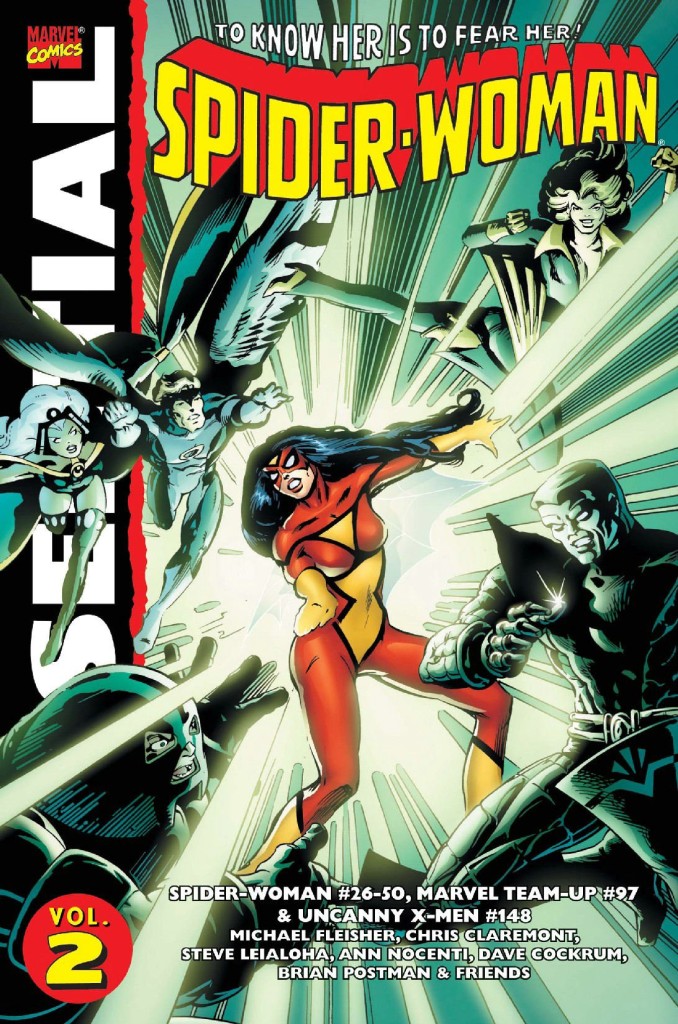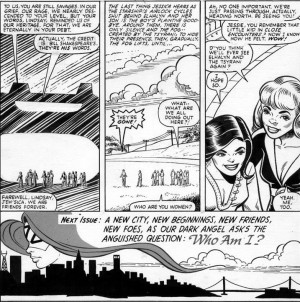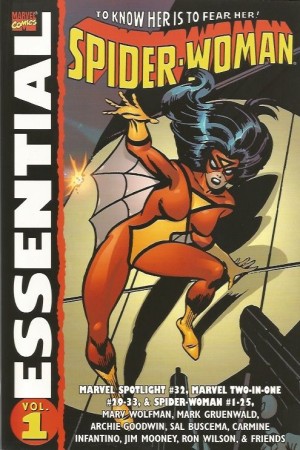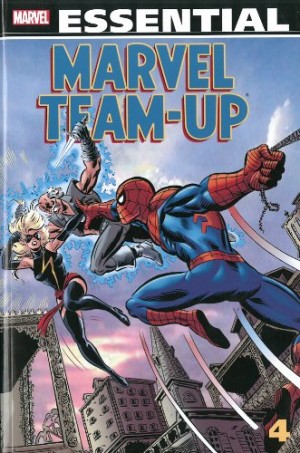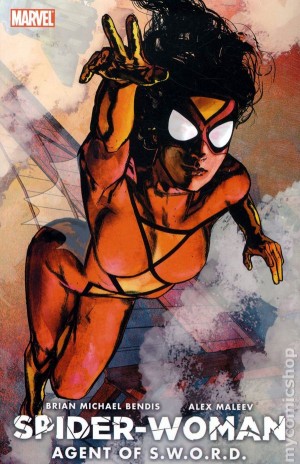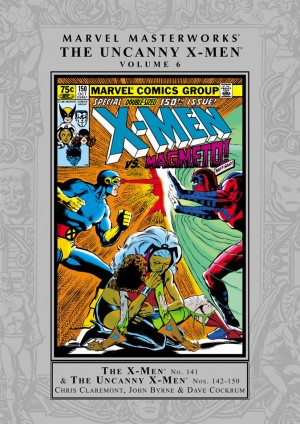Review by Tony Keen
Spoilers in review
Continuing from Essential Spider-Woman Volume 1, This completes the collection of Spider-Woman’s first title, compiling comics originally published from 1980 to 1983.
Artistic continuity is provided through most of this volume by Steve Leialoha, though there are fill-ins early in his run by Jerry Bingham and Ernie Chan. Leialoha’s art is not to everyone’s taste. His style is cartooning, with heads slightly over-sized proportional to bodies, making everyone look quite short. To those used to John Buscema or Neal Adams, Leialoha looks odd, but get past that and there’s lots to appreciate. He imparts individuality to characters’ faces, and at least draws Spider-Woman with a reasonable-sized bust, rather than the enormous breasts beloved of some. On the other hand, this volume retains a surprising number of shower scenes or other contrivances for Jessica Drew to lose her clothes.
The big problem with the art is inconsistent inking. No inker stayed for long, and a number of issues are inked by multiple hands, making it look as if whoever was passing through the office would ink a page or two while they were there. Some inkers are sympathetic to Leialoha’s pencils, such as Leialoha himself, Bruce Patterson, or, to a lesser extent, Bob Wiacek. Others are less so – Jim Mooney just makes the pages resemble a Jim Mooney comic. The black-and-white printing here does display the art better than the poor quality colour printing of the original comics. Covers are similarly by a variety of artists, including one by Frank Miller.
The opening stories are written by Michael Fleisher, who produces a mundane superhero strip, rather like the more ordinary tales of Batman. There’s also a Steven Grant-written team-up with the Hulk notable only for Carmine Infantino returning to Spider-Woman.
Then Chris Claremont arrives, on the back of his writing Ms. Marvel. He dumped Fleisher’s bounty hunter set up, remembered Lindsay McCabe from Mark Gruenwald’s supporting cast, relocated Spider-Woman to San Francisco and set her up as a private investigator. Along the way he crossed her over with the X-Men (including in an Avengers Annual omitted here) and remembered the enmity of Morgan Le Fay. It’s not Claremont’s best writing, and is inevitably over-wordy, but it is by far the best period of Spider-Woman up to that point. For the first time, Jessica Drew is an appealing character, and one starts to see why she acquired a loyal fanbase. Claremont’s best story is a humorous yarn featuring the Impossible Man.
Claremont stayed for nearly two years, but he and Leialoha left when former writer Mark Gruenwald arrived as editor. Readers were promised an “all-new” Spider-Woman (again!), with a new logo, but under Gruenwald’s direction, writer Ann Nocenti returned Jess to the weirdness that characterised her early tales. In any case, everyone bar the readers knew that the title was about to be cancelled, probably the only reason Nocenti and artist Brian Postman, then both beginning their careers, got the gig. Neither is very good, though Postman does produce a dynamic cover featuring Gypsy Moth.
In the very last story, Spider-Woman dies, and all memory of her existence is erased. This was not a popular move, the plot makes little sense, and all involved came to regret it. In the Marvel Universe such an event was never going to stick for long anyway, though it would be two decades before Jessica was regularly back in costume.
